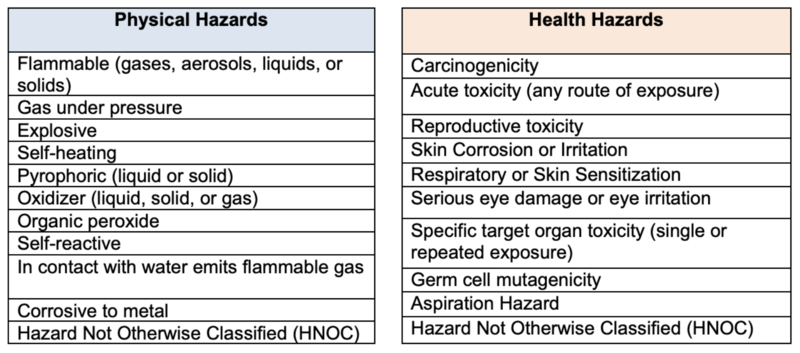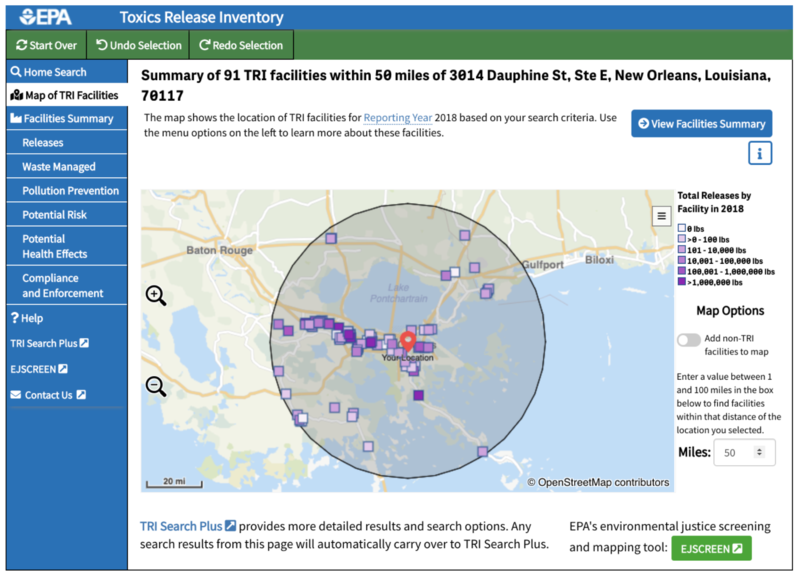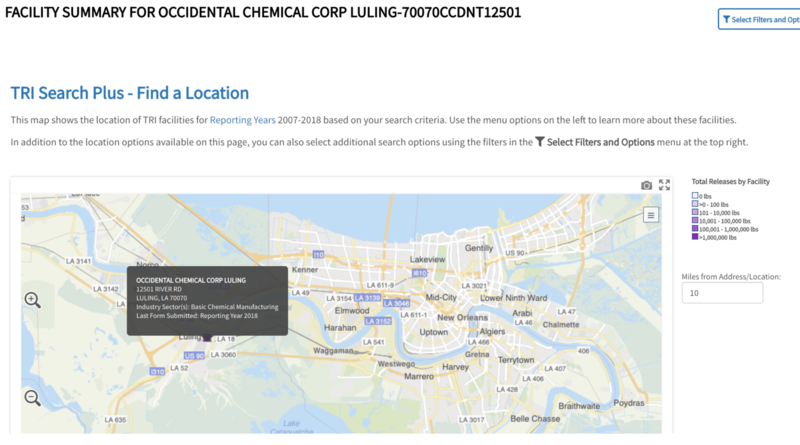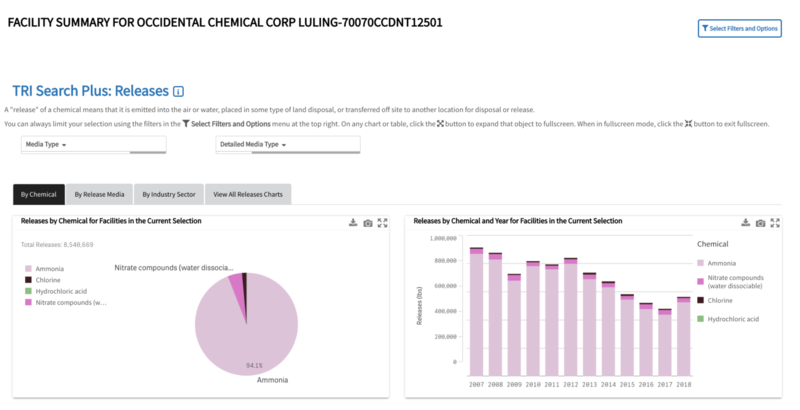Community Right-to-Know refers to the Emergency Planning and Community Right-to-Know Act (EPCRA), which was passed in the United States response to the 1984 Bhopal chemical disaster. It was passed in 1986 and created new emergency planning and reporting requirements for hazardous chemical spills.
Right-to-Know has four major provisions:
- Emergency planning
- Emergency release notification
- Hazardous chemical storage reporting requirements
- Toxic chemical release inventory
What chemicals are covered under Community Right-to-Know?
Community Right-to-Know cover 355 extremely hazardous chemicals (EHCs), 700 hazardous substances listed under CERCLA (Superfund), and thousands of additional chemicals under linked regulations. Examples of EHCs include ammonia, chlorine, sulfuric acid, and nitric acid. EPCRA does not place limits on storage or transportation of chemicals; it only requires that information be reported to local authorities.
EPCRA regulates hazardous chemicals based on whether they pose a physical hazard or health hazard.

Source: 2012 EPCRA Fact Sheet
Specific hazards are outlined on the materials safety data sheet (SDS) for each chemical, which are required by any employer who stores hazardous materials onsite. If a company is required to keep SDS information for hazardous materials, it’s a good bet that they are also covered by EPCRA.
What are Local Emergency Planning Committees (LEPCs)?
To help communities prepare for chemical spills, EPCRA over 3000 local emergency planning districts, overseen by a Local Emergency Planning Committee (LEPC) which reports to the State or Tribal Emergency Response Commission (SERC / TERC). LEPCs are responsible for creating and implementing emergency plans and working with industry to ensure that the public is notified in case of a chemical release.
LEPCs are required to:
- Write emergency plans (updated once a year)
- Establish early warning systems in case of a chemical spill and if necessary, evacuate the public
- Provide the public with information about hazardous chemicals and accidental releases
- Assist in public reports about annual releases into air, water and soil.
You can get connected to your local LEPC by contacting the SERC in your state
What information are industrial facilities required to share?
Qualifying facilities are required to submit an inventory of chemicals stored onsite -- typically through a Tier II form, due every year on March 1 -- which includes an estimate annual and daily amounts stored, the location of these chemicals in the facility, and safety data sheets (SDS) for specific chemicals. Facilities must also appoint an emergency response coordinator who will work with the LEPC to create and implement emergency safety plans.
In case of an emergency release: Facilities must notify local officials immediately -- typically by calling 911-- if there is an accidental release that exceeds minimum reporting requirements, including the name of the chemical, the time and duration of the release, any known health risks to the public. Once this call has been placed, facilities are required to follow up immediately with the local LEPC / SERC / TERC in writing.
Who is required to report? Annual reporting is required for any facility storing hazardous materials that exceed minimum thresholds; any facility required to submit safety data sheets (SDS) for hazardous materials under OSHA; any facility with a one-time high release; or upon request by LEPCs or SERCs.
What are the reporting thresholds?
A facility is “covered” under EPCRA if chemicals stored onsite exceed the following thresholds:
| Reporting threshold for Extremely Hazardous Substances (EHS) | Reporting threshold for all other hazardous chemicals | Reporting threshold for gasoline | Reporting threshold for diesel |
|---|---|---|---|
| 500 pounds or the Threshold Planning Quantity (TPQ) whichever is lower. | 10,000 pounds or the Threshold Planning Quantity (TPQ) whichever is lower. | 75,000 gallons (or approximately 283,900 liters) | 100,000 gallons (or approximately 378,500 liters) |
What is the Toxics Release Inventory? (TRI)
One of the major benefits of EPCRA was the creation of the Toxics Release Inventory, which is an annual database of all reported chemical releases in the United States, searchable by location or facility.
Facilities covered under ECRA must submit TRI reporting forms to the EPA documenting any environmental releases of toxic chemicals that occurred during the previous year. This includes any unplanned releases, as well as management of chemicals in the course of recycling, waste management, and day-to-day operations, as well as information about pollution prevention activities.
This information is put into a searchable database that can be used to support local decision-making by communities, government agencies, and members of industry.
You can search by location

Or you can search for a specific facility



References and further reading
For more information, see the 2012 EPCRA Fact Sheet For oil and gas specifically, see the EPCRA Guide for Oil and Gas Operations In plain English: Does my facility have to comply with EPCRA?
This post is part of the Bucket Monitor project.
For more information, see our introduction and project overview.
Subscribe to the tag "bucket-monitor" to get updates when we post new material.

1 Comments
Great post! TRI has gotten so much better in the past 10 years. There are a lot more helpful ways to explore the data now, and new ways to overlay it with other important information. But it's still has Many gaps! To me, it feels more like a historic, self reporting record than a modern account of releases. The most recent data is always at least 2 years old (it used to be 3, so we're slowly improving there). Even the industries that are required to report to it, self report this material. So I always take it with a grain of salt. Also, not everyone is subject to report, even if they release harmful chemicals and pollutants that the TRI tracks:
Anyway, not to say it's not a good and useful data source, it is! It's helpful for tracking bad actors, to find geographic pollution hot spots, and for relating human environmental health, but it's limited. For more recent release tracking the National Response Center (NRC) reports are useful because rather than collecting and publishing releases on a preset schedule, polluters are required to file a report "when the amount reaches a federally-determined limit." It is the designated federal point of contact for reporting all oil, chemical, radiological, biological and etiological discharges into the environment, anywhere in the United States and its territories.
SkyTruth Alerts is a helpful way to get updates on NRC reports within a geographic area. They're also great about adding other known reporting data sets to their maps - for example, if your state publishes spill data somewhere.
Is this a question? Click here to post it to the Questions page.
Reply to this comment...
Log in to comment
Login to comment.